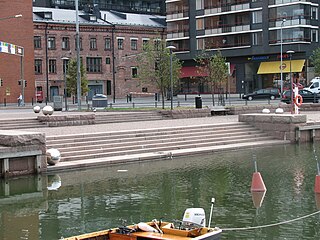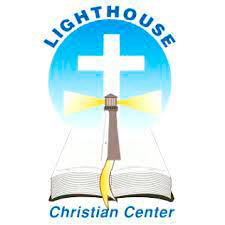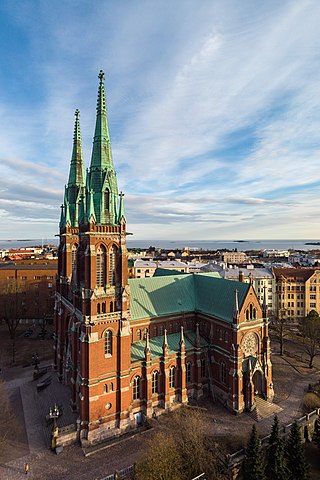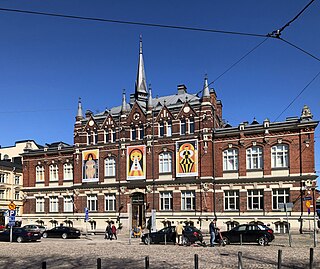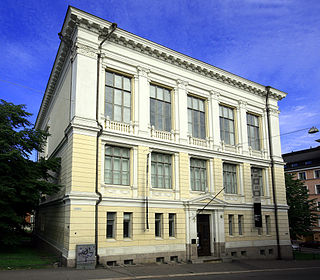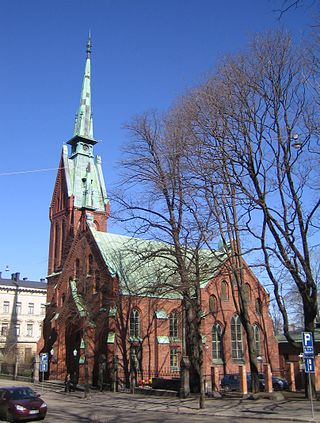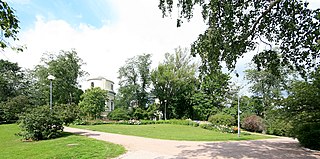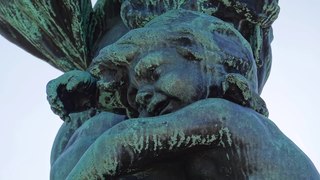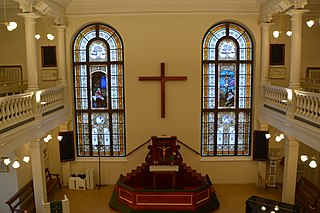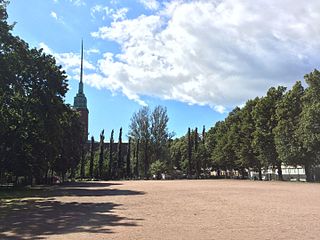Self-guided Sightseeing Tour #10 in Helsinki, Finland
Legend
Guided Free Walking Tours
Book free guided walking tours in Helsinki.
Guided Sightseeing Tours
Book guided sightseeing tours and activities in Helsinki.
Tour Facts
6.1 km
0 m
Experience Helsinki in Finland in a whole new way with our self-guided sightseeing tour. This site not only offers you practical information and insider tips, but also a rich variety of activities and sights you shouldn't miss. Whether you love art and culture, want to explore historical sites or simply want to experience the vibrant atmosphere of a lively city - you'll find everything you need for your personal adventure here.
Activities in HelsinkiIndividual Sights in HelsinkiSight 1: Olo n:o 22
Olo n:o 22 is an outdoor sculpture in Hietalahti, Helsinki, Finland.
Sight 2: Sinebrychoffin puisto
The Sinebrychoff Park, colloquially referred to as the "Koff Park", is a park in Punavuori, Helsinki, Finland, near Hietalahti. The park was named after the Sinebrychoff brewery, which had its premises next to the park from 1819 to 1992 and to whose lands the park used to belong, and the Sinebrychoff family that owned both. In addition to the Old Church Park and Kaivopuisto, the park is among the most popular parks in Helsinki.
Sight 3: Helsingin metodistiseurakunta
The Helsinki Finnish Methodist Church is a Finnish Methodist congregation in Helsinki, Finland. It belongs to the Finnish Methodist Church and was founded in 1894. The current congregation building is located in the Punavuori district of Helsinki.
Wikipedia: Helsinki Finnish Methodist Church (EN), Website, Website
Sight 4: Lighthouse Christian Center
Lighthouse Christian Center is a Pentecostal church founded in 2002 in Helsinki. The community is a congregation of African origin that cooperates with the Pentecostal Church of Finland. Originally, the parish operated as a registered association and was organised as a religious community in 2016. Church activities include weekly worship services, Bible teaching, prayer meetings, and Sunday schools. In addition, the church organizes evangelistic events in the summer.
Sight 5: St. John's Church
St. John's Church in Helsinki, Finland, is a Lutheran church designed by the Swedish architect Adolf Melander in the Gothic Revival style. It is the largest stone church in Finland by seating capacity.
Sight 6: Design Museum
Design Museum is a museum in Helsinki devoted to the exhibition of both Finnish and foreign design, including industrial design, fashion, and graphic design. The building is situated in Kaartinkaupunki, on Korkeavuorenkatu Street, and is owned by the Republic of Finland through Senate Properties. The building was completed in 1895 and originally built as a school building for the Swedish school Läroverket för gossar och flickor.
Sight 7: Museum of Finnish Architecture
The Museum of Finnish Architecture is an architectural museum in Helsinki, Finland. Established in 1956, it is the second oldest museum of its kind devoted specifically to architecture. The museum was founded on the basis of the photographic collection of the Finnish Association of Architects (SAFA), which was established in 1949.
Wikipedia: Museum of Finnish Architecture (EN), Website, Tripadvisor
Sight 8: Against the Raging Sea

Facing the Sea is a relief made by Matti Haupt on the wall of the former head office of Suomen Höyrylaiva Oy, now the Church House, at Eteläranta 8 in Helsinki, Helsinki.
Sight 9: Memorial to Jewish Refugees - Hands Begging for Help
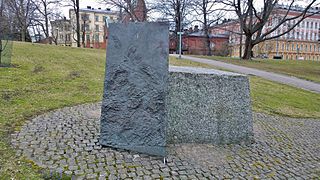
The Memorial to Jewish Refugees or Hands Pleading for Help is a sculpture in Ullanlinna, Helsinki, on a slope near the Makasiini terminal. The work was designed by Rafael Wardi and Niels Haukeland and was unveiled on November 5, 2000. The sculpture is dedicated to the memory of eight Jewish refugees handed over by Finland to Nazi Germany during World War II. Only one of them survived the Nazi extermination camps alive.
Sight 10: Deutsche Kirche
The German Church is a church in the Kaartinkaupunki district of Helsinki and belongs to the German Evangelical Lutheran Congregation in the Evangelical Church of Finland.
Sight 11: Helsinki Observatory
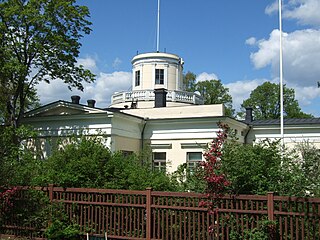
Helsinki University Observatory housed the Department of Astronomy at the University of Helsinki, south Finland until end of 2009. It is now an astronomy-themed visitor centre and museum.
Sight 12: Tähtitornin vuori
Tähtitorninvuori or Tähtitorninmäki is a rocky hill about 30 meters high in Ullanlinna, Helsinki, next to the South Harbor. The hill is mostly a park, but there are also a few public buildings.
Sight 13: The Shipwrecked
Shipwrecked is a bronze sculpture in Helsinki's Tähtitorninmäki district, Ullanlinna. Unveiled in 1898, the work was designed by sculptor Robert Stigell. The work was cast in Paris, where Stigell also finished his sculptures. The height of the work is 4.5 metres, but with the granite pedestal the height rises to six metres. The stand was manufactured in Hanko.
Sight 14: Statue of Peace
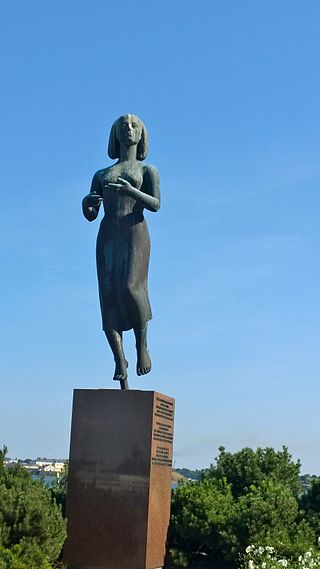
The Statue of Peace is a sculpture by sculptor Essi Renvall located in Kaivopuisto, Helsinki. It was erected as a memorial to the 20th anniversary of the YYA Convention in 1968. The statue is located on the shore along Ehrenströmintie, some distance south of the Olympic Terminal.
Sight 15: Mannerheim Museum
The Mannerheim Museum is located in Helsinki, Finland. It is dedicated to preserving and displaying items related to the life and times of Marshal C. G. E. Mannerheim, a Finnish statesman and military officer. The Mannerheim Museum is located on top of a hill in a prestigious residential area next to the Kaivopuisto park in Helsinki. The building was the home of Mannerheim from 1924 to 1951. With the exception of a few rooms that have been converted for exhibition purposes, his home has been preserved in its original state.
Sight 16: Watchdog Pekka
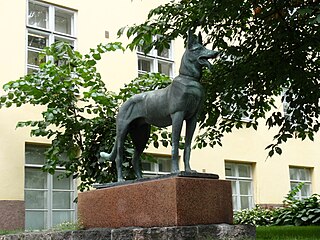
Pekka the Dog is a bronze sculpture by Emil Cedercreutz, completed in 1932 and unveiled in front of the then Salus Hospital in 1934. The large Belgian Shepherd Malinois is located in Kaivopuisto Park in Helsinki on Kalliolinnantie.
Sight 17: St. Henry's Cathedral

St. Henry's Cathedral is a Catholic cathedral in Helsinki, Finland, dedicated in honor of Bishop Henrik, a 12th-century Bishop of Turku. It is the cathedral church of the Diocese of Helsinki. In terms of membership, the cathedral is the largest in Finland, with approximately 5,000 members.
Sight 18: Torso

Torso is a work by sculptor Marjo Lahtinen, unveiled at Tähtitorninvuori in Ullanlinna, Helsinki, on Helsinki Day, 12 June 2008. Torso belongs to the public art collection of the Helsinki City Art Museum.
Sight 19: Lähetyskirkko
The Mission Church in Ullanlinna, Helsinki, is the church of the Finnish Missionary Society in the Mission House. The red-brick Mission House and Church were designed by architect Karl August Wrede and commissioned in 1900. The FMS sold the office premises of the Mission House in 2018 and they were converted into residential apartments, the FMS remained in the ownership of the FMS.
Sight 20: Tehtaanpuisto
Tehtaanpuisto, often called Sepänpuisto, is a park on the southern edge of Punavuori in Helsinki, around Mikael Agricola Church. It is bounded by Tehtaankatu in the south, Laivurinkatu in the east and Sepänkatu in the northwest. The church plot almost divides the park in two, but there is a narrow park zone along Sepänkatu that connects its parts to each other.
Sight 21: Mikael Agricola Church
Mikael Agricola Church is a Lutheran church located in the Punavuori district of Helsinki, Finland. It was designed by Lars Sonck and built between 1933 and 1935. The church was inaugurated on 14 April 1935. It is named after bishop Mikael Agricola.
Sight 22: Luettelo
The catalogue is a sculpture by Tiina Raitanen, located in Munkkisaari, Helsinki, at the intersection of Telakkakatu and Munkkisaarenkatu, in front of the European Chemicals Agency. Materials in it include concrete and metals such as acid-proof steel, bronze and aluminum. The work consists of two parts, a relief cast in concrete and shapes leaning and overlapping. The height of the work exceeds four meters. It was revealed on November 2, 2022.
Sight 23: Juhani Aho

The statue of Juhani Aho is a bronze facsimile of writer Juhani Aho, created by sculptor Aimo Tukiainen, with two lights, one in Eira, Helsinki, and the other in Aho's birthplace in Iisalmi. Both were erected in 1961.
Share
Disclaimer Please be aware of your surroundings and do not enter private property. We are not liable for any damages that occur during the tours.
GPX-Download For navigation apps and GPS devices you can download the tour as a GPX file.
